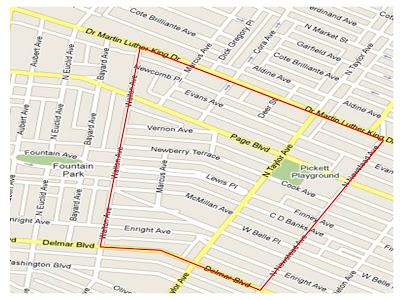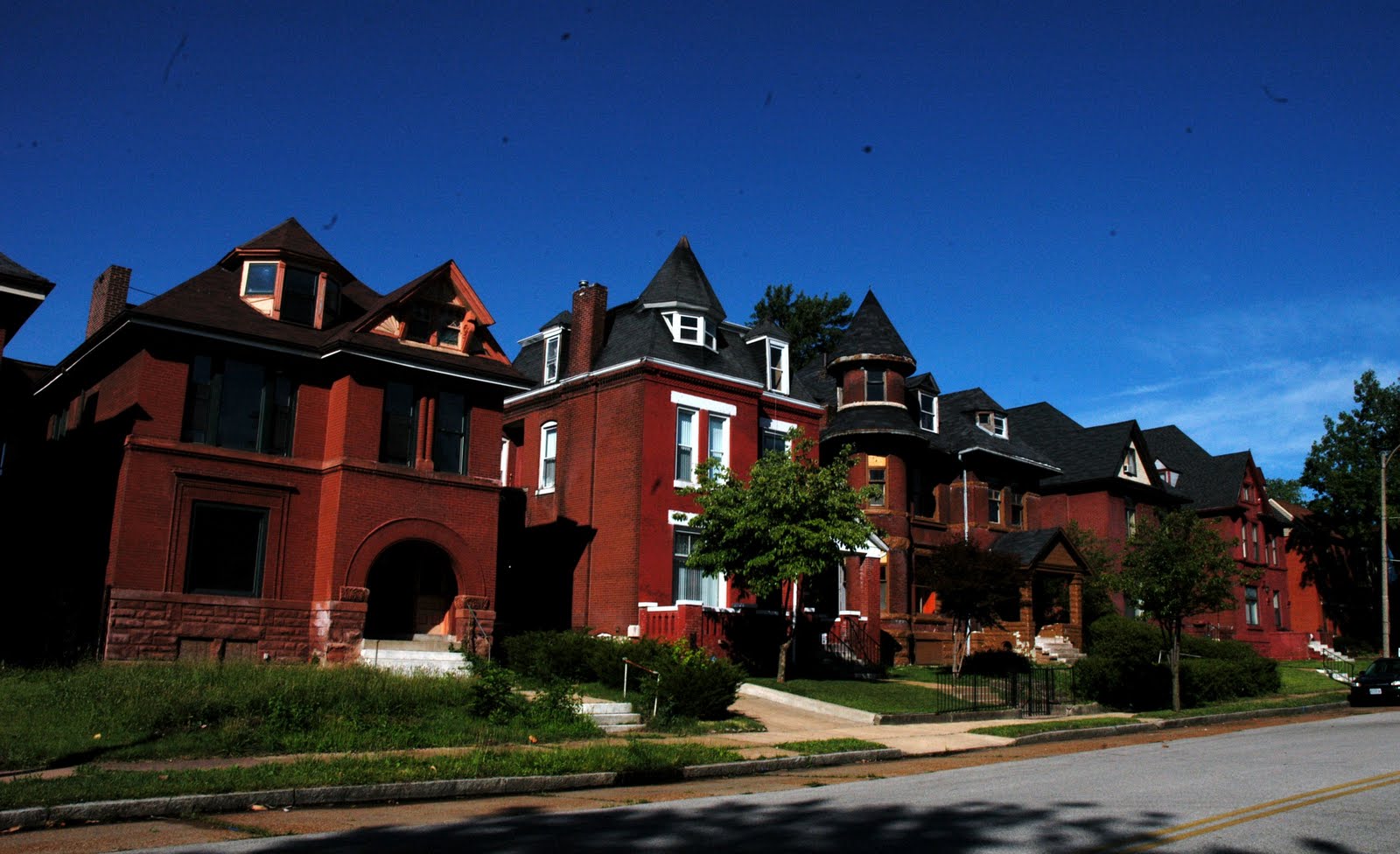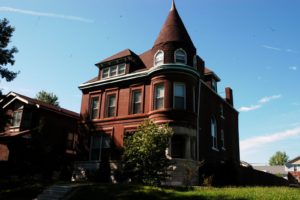 Lewis Place was laid out in 1890 and was privately owned and developed by the family of William J. Lewis. The Lewis Place historic design recognizes the architectural significance of housing around the turn of the century. The architectural firm of Barnett, Haynes & Barnett has been admired by historic preservationists throughout the country.
Lewis Place was laid out in 1890 and was privately owned and developed by the family of William J. Lewis. The Lewis Place historic design recognizes the architectural significance of housing around the turn of the century. The architectural firm of Barnett, Haynes & Barnett has been admired by historic preservationists throughout the country.
Lewis Place is a three block street with the center parkway which is lined on both sides with beautiful homes built between 1890 and 1928. The housing stock reflects the ambiance of housing along the beautiful Euclid-Central West End area.
Lewis Place was placed on the National Register of Historic Landmarks on September 15, 1980. Lewis Place today is situated in the midst of a revitalizing community with St. Louis University, Washington University and Ranken Technical College all within a three mile radius of the Lewis Place community.
Lewis Place is the oldest African -American private street in St. Louis. Lewis Place was laid out in 1890 and was privately owned and developed by the family of William J. Lewis. St. Louis has a rich history in the struggle of African-Americans for social and civil rights. Lewis Place played an important part in the struggle for fair housing.
Lewis Place like many other neighborhoods in St. Louis during the periods between 1910 to 1945 barred African-Americans from certain streets with the use of restrictivecovenants. The covenants were agreements between White homeowners to exclude the sale of their homes to Black perspective buyers.
In the 1940’s, a group of determined African-Americans led by Attorney Robert Witherspoon, husband of the famed social activist Dr. Fredda Witherspoon, decided to fight the Lewis Place restrictive covenant. The persuaded fair-skinned Blacks who were able to pass for White, to purchase several homes in Lewis Place. once the purchases were completed, they then transferred the deeds to the actual of the properties, who voted down the restrictive covenant governing the sales of the housing in Lewis Place.
This movement lead to the legal thrust that catapulted the St. Louis, landmark case of Shelly Vs Kraemer into the supreme court. This landmark case struck down restrictive covenants across the entire United States of America, thus opening the doors to a new set of fair housing regulations on the federal, state, and local levels. Following the Shelly Vs. Kraemer case, African-Americans slowly began to gain the right to purchase homes in any neighborhood of their choice.
More Information About Lewis Place:
Opening the Gates – Segregation, Desegregation and the Story of Lewis Place – Elizabeth A. Pickard, 2005, Missouri Historical Society
https://en.wikipedia.org/wiki/Lewis_Place,_St._Louis
http://www.lewisplacestl.org/newsletters/otg.pdf
http://www.stlouiscitytalk.com/2010/06/lewis-place-neighborhood.html
http://www.aaregistry.org/historic_events/view/lewis-place-st-louis-landmark



